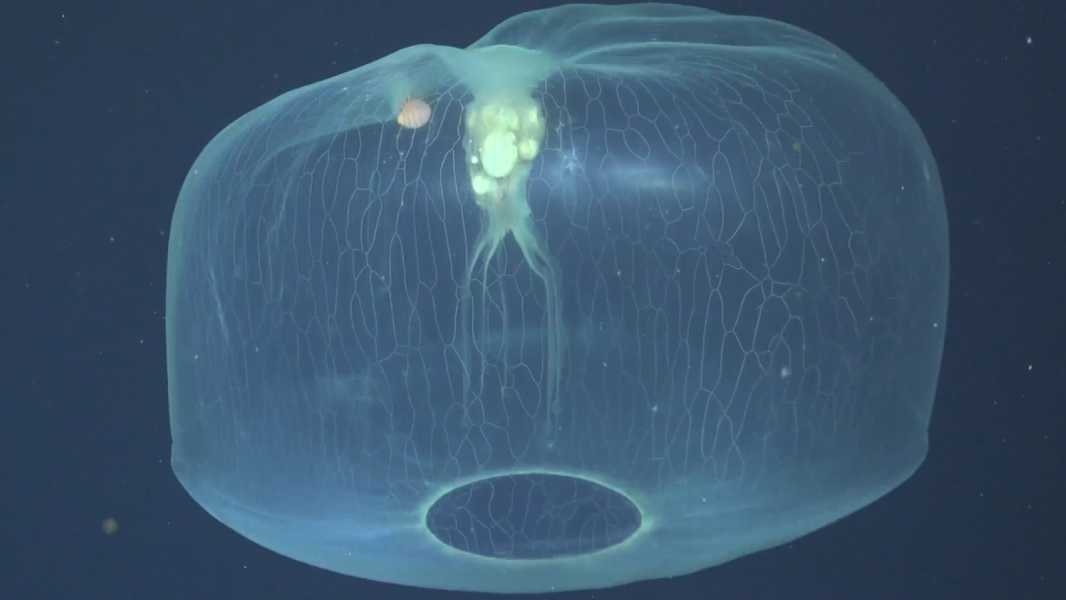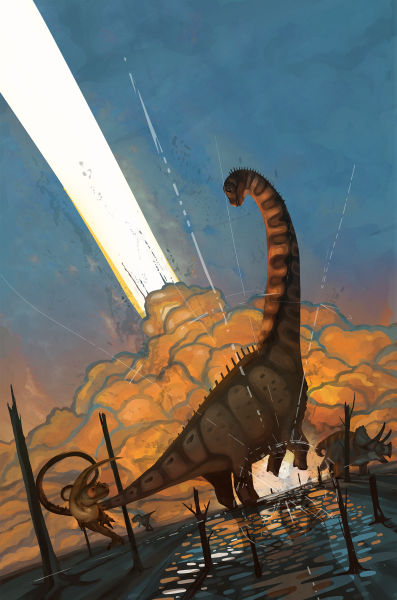Newly released, eerie footage has captured an unusual, otherworldly scene: a giant jellyfish with a tiny isopod floating inside its sac-like body. In the video, the translucent dome squeezes its membrane as it moves through the twilight zone with the bright orange isopod, a crustacean, inside its bell.
Scientists from the Schmidt Ocean Institute discovered the elusive creature at a depth of 2,766 feet (843 meters) during an expedition to the Atacama Trench off the coast of Chile. They determined that the jellyfish belongs to the genus Deepstaria. These jellyfish do not have long stinging tentacles, so they capture their food by wrapping their bodies around prey, according to a post on the institute’s Instagram. However, the isopod in the video is not food; rather, it is a permanent resident.
Deepstaria jellyfish were first spotted off the coast of California in 1966 and were named after the Deepstar 4000 submersible that discovered them. Since then, Deepstaria sightings have become extremely rare.

The Deepstaria jellyfish uses its membranous dome to capture prey and hold it inside.
There are currently two species in this genus: Deepstaria enigmatica and Deepstaria reticulum.
Their exact distribution remains unknown, but both species have been recorded in the Gulf of Mexico, off the coast of California, the Caribbean Sea, and the central Atlantic Ocean. D. enigmatica has also been observed in the Southern Ocean near Antarctica. All sightings were recorded at depths of about 2,000–5,700 feet (600–1,750 m), according to a 2018 study.
Deepstaria jellyfish use their membranous dome to engulf small crustaceans, fish, and even other jellyfish, closing their dome to keep the food inside. This movement allows the isopods to penetrate the jellyfish's body.
According to the report, the footage shows the venous structure of the gastrovascular system on the animal's body, which is important for digestion and transport of food to the stomach, located at the top of the bell.
“We're looking at a large scyphozoan jellyfish called Deepstaria enigmatica, which is a member of the Ulmaridae family, which includes the common moon jellyfish,” said Allen Collins, curator of Porifera, Medusozoa, and Ctenophora at the Smithsonian Institution's National Museum of Natural History, who was not involved in the expedition.
“On the underside of the subumbrella (inside the bell) we see the isopod Anuropus bathypelagicus, which is often (perhaps always) associated with this jellyfish,” Collins added in an email to Live Science.
A. bathypelagicus is a large blind isopod that can grow to over 3 inches (8 centimeters) in length. Researchers have found that Anuropus inhabits both species of Deepstaria and uses hook-like appendages to cling to their bodies.
In 1969, a study using the Deepstar submersible reported observations of D. enigmatica with abnormal, nearly motionless swimming movements. As the submarine moved, a surge of water flipped the jellyfish on its side, revealing a small Anuropus isopod attached to its body.
When examined, the jellyfish was found to be missing body parts, including its stomach and mucous membrane, which explained its lethargic behavior and raised suspicions that the isopod might be feeding on the jellyfish. Jellyfish remains were also found in the stomach contents of A. bathypelagicus, further supporting the idea that the isopod is eating its Deepstaria host, Collins noted.
However, it could also indicate that the isopod is feeding on captured prey inside Deepstaria.
“There have only been a few papers that have mentioned this, and no one has specifically tracked how the isopod actually eats
Sourse: www.livescience.com





